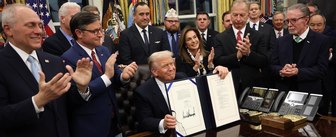Last week, Eli Lilly, a company that manufactures prescription drugs, announced that it would cut the price of some of its insulin products. The decision came after what Democratic Senator Bernie Sanders called a "successful public pressure campaign" to reduce the price as individuals were being forced to ration or go without the drug.
Forgoing prescribed medicine because of the cost is something that many Americans say they have experienced, according to the latest Economist/YouGov poll. More than one-third of Americans (37%) say they have not filled a prescription for medication because of its cost, and another 10% would prefer not to say. Women (43%) and people with an annual family income under $50,000 (44%) are especially likely to say this. Republicans (39%) and Democrats (38%) are equally likely to have had this experience.
About half of Americans (53%) know someone who uses insulin, including 5% who say they use it personally. Following Eli Lilly’s announcement, Democrats in Congress — including Sanders — introduced legislation to further restrict the list price of insulin to no more than $20 per vial.
About three-quarters of Americans (73%) strongly or somewhat support government limits on how much drug companies can charge for insulin. Only 16% strongly or somewhat oppose this. Similar majorities of Americans would also support government limits on the costs of other drugs: cancer medications (74%), blood thinners (72%), and antidepressants (69%).
Regardless of whether they have personally struggled to afford medication, Americans generally support the government negotiating prices with insurance companies. By a ratio of three to one (61% to 20%), Americans support the government negotiating drug prices with insurance companies, and they support Medicare negotiating its drug costs by a slightly wider margin (66% to 20%).
— Carl Bialik and Taylor Orth contributed to this article
See the toplines and crosstabs from the Economist/YouGov poll conducted on March 4 - 7, 2023 among 1,500 U.S. adult citizens.
Methodology: Respondents were selected from YouGov’s opt-in panel using sample matching. A random sample (stratified by gender, age, race, education, geographic region, and voter registration) was selected from the 2019 American Community Survey. The sample was weighted according to gender, age, race, education, 2020 election turnout and presidential vote, baseline party identification, and current voter registration status. Demographic weighting targets come from the 2019 American Community Survey. Baseline party identification is the respondent’s most recent answer given prior to June 1, 2022, and is weighted to the estimated distribution at that time (34% Democratic, 31% Republican). The margin of error for the overall sample is approximately 3%.
Image: Adobe Stock (rawpixel.com)










